Setting Up Additional Accounts
Chances are you’re not the only person using your computer; it’s likely that you’ll be sharing your PC with your spouse and kids, at least to some degree. Fortunately, you can configure Windows so that different people using your computer sign on with their own custom settings—and access to their own personal files.
The way to do this is to assign each user in your household his own password-protected user account. Anyone trying to access another user’s account and files without the password is denied access.
Windows 8 lets you create two different types of user accounts—online and local.
An online account is linked to a new or existing Microsoft Account (previously known as a Windows Live account), and it lets you synchronize your account settings between multiple computers. (That is, you can log into another Windows 8 computer with your Microsoft Account and see the same Start screen and apps you have on your home computer.) The only downside to this type of account is that your computer has to be connected to the Internet for you to log on.
The second type of account is a local account exclusive to your current computer. With a local account, you don’t have to be connected to the Internet to log into your computer.
When you set up an account, you can choose from three different ways to log in. You can log into an account with a traditional password, with a PIN code, or with something new, called a picture password. The following sections look at all these options.
Setting Up a New Account with a Microsoft Account
By default, Windows likes to create new accounts linked to a Microsoft Account. So if you have a Hotmail, Xbox Live, Windows Phone, or other Microsoft account, you can use that account to log into your Windows 8 computer.
The advantage of setting up a Microsoft Account is that you can use the same username and password for multiple devices and services. Your Windows settings also follow you from device to device; it’s a little like taking the same computer with you wherever you go, even if you’re using a different computer.
For that reason, creating a Windows user account linked to your Microsoft Account is the way to go. Here’s how to do it:
- Display the Charms Bar and click or tap Settings to display the Settings panel.
Click or tap Change PC Settings to display the PC Settings page, shown in Figure 5.14.
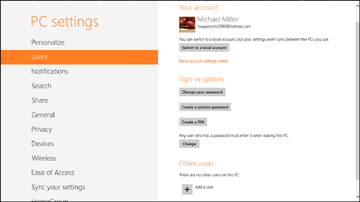
Figure 5.14. Creating a new user account.
- Click or tap Users in the left column.
- Scroll to the Other Users section and click or tap the Add a User button.
When the Add a User screen appears, as shown in Figure 5.15, enter the person’s email address into the Email Address box. If this person currently has a Microsoft Account, such as a Hotmail account, use the email address for that account.
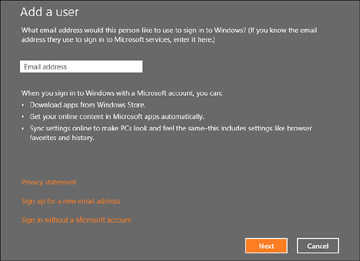
Figure 5.15. Entering the email address for your new user account.
- Click or tap the Next button.
- If you entered an email address that was not associated with an existing Microsoft Account, you’re prompted to enter additional information (first name, last name, ZIP Code, and so forth) to create a new account. Do so and then click the Next button.
- When the final screen appears, as shown in Figure 5.16, click the Finish button.
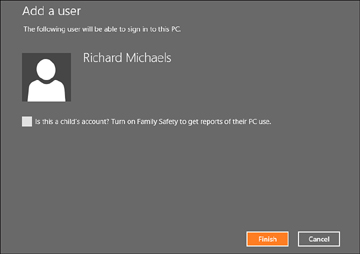
Figure 5.16. A new user account has been created.
This new user is now able to sign in to Windows from the Lock screen.
Setting Up a New Local Account
If a new user does not have an existing Microsoft Account of any kind and does not want one, or if the user only needs access to this particular PC, you can create a local account for this person. The nice thing about a local account is that the computer does not have to be online for the user to log in and use the PC.
Follow these steps to create a new local account:
- Display the Charms Bar and click or tap Settings to display the Settings panel.
- Click or tap Change PC Settings to display the PC Settings page.
- Click or tap Users in the left column.
- Scroll to the Other Users section and click or tap the Add a User button.
- When the Add a User screen appears, go to the bottom of the screen and click or tap Sign In Without a Microsoft Account.
- Click or tap the Local Account button.
- Enter the desired username into the User Name box, as shown in Figure 5.17.
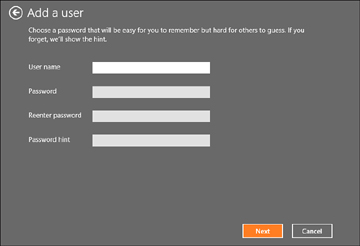
Figure 5.17. Creating a new local account.
- Enter the desired password into the Password box and then re-enter it into the Retype Password box.
- Enter some sort of hint about the password into the Password Hint box.
- Click or tap the Next button.
- When the final screen appears, click or tap the Finish button.
Switching a Microsoft Account to a Local Account
If you created your initial Windows user account as one linked to a Microsoft Account, you might later decide that you’d rather have a local account instead. Although you can certainly create two different accounts (Microsoft Account and local) on the same PC, you can also switch an existing Microsoft Account to a local account.
Here’s how you do it:
- Display the Charms Bar and click or tap Settings to display the Settings panel.
- Click or tap Change PC Settings to display the PC Settings page.
- Click or tap Users in the left column.
- Click or tap the Switch to a Local Account button.
- Enter your current password and click or tap the Next button.
- Accept the current username or enter a new one on the Change to a Local Account screen that appears, as shown in Figure 5.18.

Figure 5.18. Changing an online account to a local account.
- Enter your current password into the Password box and then re-enter it into the Retype Password box.
- Enter some sort of hint about the password into the Password Hint box.
- Click or tap the Next button.
- When the final screen appears, as shown in Figure 5.19, click or tap the Sign Out and Finish button.
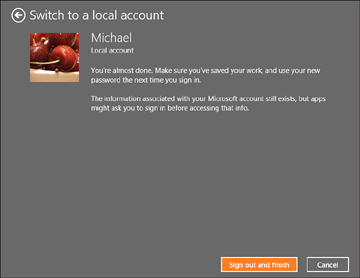
Figure 5.19. Finishing the switch to a local account.
Windows signs you out of your current account and displays the Lock screen. Click or tap the Lock screen and sign in as normal.
Logging in with a Traditional Password
By default, you log into Windows 8 using a traditional password consisting of some combination of letters and numbers. Use your keyboard to enter the password when prompted.
Logging in with a PIN Code
Windows 8 also lets you log into your computer using a shorter numeric PIN, in much the same way you log into your smartphone. (In fact, this feature was added for those smartphones and tablets running the Windows operating system.)
To create a PIN for your Windows account, follow these steps:
- Display the Charms Bar and click or tap Settings to display the Settings panel.
- Click or tap Change PC Settings to display the PC Settings page.
- Click or tap Users in the left column.
- Click or tap the Create a PIN button.
- Enter your current password and click or tap the OK button.
- Enter the desired four-number PIN and then click or tap the Finish button on the Create a PIN panel, as shown in Figure 5.20.
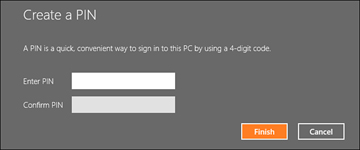
Figure 5.20. Creating a PIN for your Windows account.
When you next log into your computer, you’re prompted to enter your PIN instead of your password, as shown in Figure 5.21. Enter the four-number PIN (you don’t have to press Enter when done) to log in.
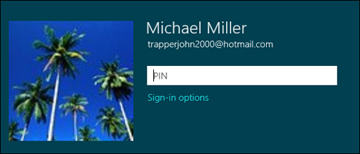
Figure 5.21. Signing in with a PIN.
Logging in with a Picture Password
Windows 8 also lets you log in with something called a picture password. This is a picture that you select, and you trace over the picture with your finger to sign in. This type of log in is specifically designed for touchscreen use; it is not suited for mouse or keyboard use.
To create a picture password, follow these steps:
- Display the Charms Bar and tap Settings to display the Settings panel.
- Tap Change PC Settings to display the PC Settings page.
- Tap Users in the left column.
- Tap the Create a Picture Password button.
- Enter your current password and tap the OK button.
- Tap the Choose Picture button.
- from the Files screen, navigate to and select the picture you want to use and then tap the Open button.
- When the How’s This Look? screen appears, tap the Use This Picture button.
- Draw three gestures on the picture on the Set Up Your Gestures screen, as shown in Figure 5.22. Ideally, your gestures trace all or part of the image. Remember, you need to be able to repeat these gestures each time you log into Windows.

Figure 5.22. Setting up your gestures for your picture password.
- When prompted, confirm (repeat) the gestures.
- When the final screen appears, tap the Finish button.
When you log into Windows with a picture password, you see the image you selected. To log in, you have to retrace your original gestures across the picture. After you do so, you’re logged in.

Figure 5.23. Logging into Windows with a picture password.
Switching Users
If other people are using your computer, they might want to log in with their own accounts. To switch users on a Windows 8 computer, follow these steps:
- Press the Windows key to return to the Start screen.
- Click or tap your username and picture in the top-right corner to display the pop-up menu.
- Click or tap the desired user’s name.
- Enter the new user’s password and then press Enter or click or tap the next arrow.
Logging Out
When you switch users, both accounts remain active; the original user account is just suspended in the background. If you’d rather log out completely from a given account and return to the Windows Lock screen, follow these steps:
- Press the Windows key to return to the Start screen.
- Click or tap your username and picture in the top-right corner to display the pop-up menu.
- Click or tap Sign Out.
Logging In with Multiple Users
In Chapter 4, “Getting to Know Windows 8,” you learn how to log into Windows when your computer first starts up. If you have more than one user assigned to Windows, however, the log in process is slightly different. Follow these steps:
- From the Windows Lock screen, press any key on your keyboard or gently tap the screen.
- By default, the logon screen lists the main user of this computer; click or tap the left arrow to display a list of all the users registered for this computer, as shown in Figure 5.24.
Click or tap your username.

Figure 5.24. Logging into Windows with multiple users.
- Your personal log in screen displays. Enter your password and then press the Enter key or click or tap the right arrow button.
Windows now displays your personal Start screen.
